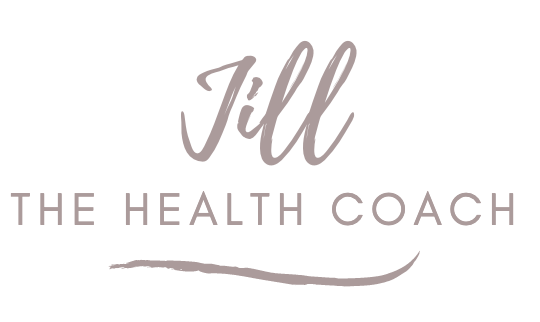I just finished listening to the free online course about Mold. It was so good and informative that I ended up buying it. Mold is more pervasive and dangerous than you would think and often the underlying cause of so many ailments.
For example, my friend’s daughter had mold in her dorm room in college and had to go to the Emergency Room twice with respiratory issues and then had to come home for a month to recover. Another one of her school mates had a weakened immune system from an autoimmune disease. Horrifically, it is believed that the mold may have contributed to her tragic death at the University of Maryland. This can be a SERIOUS and that’s why it’s so important to share this information.
Mold may be the underlying cause of many symptoms, but the layering effect of having other immune weakening diseases such as autoimmune diseases or infections such as lyme or a leaky gut, etc, etc. may exacerbate symptoms even more.
Oftentimes, it’s not one trigger but many. Imagine your body is like a bucket. It can only be filled so much with toxins or “assaults” until it reaches the tipping point. Add to that bucket everyday assaults like poor air quality, toxins and pesticides in our food and water, chemicals in our everyday beauty and cleaning products, in our furniture and carpeting, etc.
Then, our systems are weakened by this overburden, get clogged up. It then becomes hard to release all of these toxins, leaving us less “armed” to defend against other invaders such as viruses and infections that our bodies can normally can eradicate.
Mold is just another one of those invaders that our bodies are finding more and more difficult to defend against. To make matters worse, it is more often overlooked as any type of cause or not even explored as an option.
This is too important to ignore. However, one of the most frustrating parts of mold is that there is not one obvious symptom as it affects everyone differently. For example, you may live in a house that has unsafe levels of mold and one family member may have chronic sinus issues (more often a BIG sign of mold), while some other family member may have brain fog and dizziness wile another family member may have chronic headaches and another feels fine.
Many of these symptoms depend on genetics, gender (men have more testosterone which can guard them against the effects of mold more than women), weak or strong immune systems, etc.
Then to add insult to injury, mold is often not readily detectable. We expect to see the obvious black mold, but it is often light and looks like dust.
Please see below some top mold guidelines to help you detect if mold is affecting you or your family.
Common Symptoms:
· Chronic sinus issues (usually always indicates fungal growth in nasal cavities)
· Chronic cough
· Chronic headaches
· Brain fog/difficulty concentrating
· Dizziness
· Fatigue
· Watery eyes
· Skin sensations (tingling, rashes, etc)
· Morning stiffness/joint pain
· Light sensitivity
· Allergies
Signs of Possible Mold:
· Indoor humidity of over 60% (humidity should be between 30% – 50% to inhibit the GROWTH of mold)
· Previous flooding, water seepage in basement or leaky pipes, roof, etc.
· Look at the UNDERSIDE of horizontal surface/shelves in cabinet or closets (closed dark spaces. Use a flashlight and look for coating of what looks like dust. This is typically mold as dust settles on the TOP of shelves or horizontal surfaces.
· Wood that is separating or cracking that could be due to moisture
· If it looks like mold, it probably is (my friends’ daughter had mold growing on her shoes in her closet in her dorm room!)
Environmental testing:
TEST DON’T GUESS the following are at-home environmental tests.
· ERMI – EnviroBiomics
· EMMA – Real Time Labs
· Plate testing – Immunolytics
Lab Tests for Individuals:
Mycotoxin Testing
Real Time Labs
Great Plains Labs
How to clean mold:
Find an inspector
IIRC Institute of Inspections Cleaning and Mold Restoration
***Do not remediate yourself unless you get exact protocols and wear
protective gear. You could exacerbate symptoms if not done properly.
· DO NOT USE BLEACH OR FUNGUCIDES -these may temporarily kill mold but may spread the mold an is not recommended by mold experts.
· Use Multi-Enzyme solutions
USEnzyme or American Mold Experts
· Baking soda and water may help neutralize mold but not super effective
· Borax with water may also assist but not 100% effective
Clothing that is contaminated with mold may be cleaned in very hot water with enzymatic solutions that will dissolve mold.
How to recover from mold:
· The food you eat makes a huge difference. Eat clean, one-ingredient foods so body can build its immune system.
· Physical movement to stimulate the exit of toxins.
· Sinus irrigation
· Supplementation to strengthen immune system and help kill off or crowd out mold spores body. Keep in mind that antibiotics may make a mold situation worse and is one of the leading contributors to mold growth in the body. (Practitioner consult is advised)
The above are some basics. If you do want to learn more, the encore online event is still happening through Feb 8th.
Please please share this information with your friends and family.
All material in this newsletter is provided for information only and may not be construed as medical advice or instruction. No action or inaction should be taken based solely on the contents of this publication;instead readers should consult appropriate health professionals on any matter relating to their health and well-being. The information provided has not been approved the Food & Drug Administration and is not intended to diagnose, treat, cure, or prevent any illness or disease.

